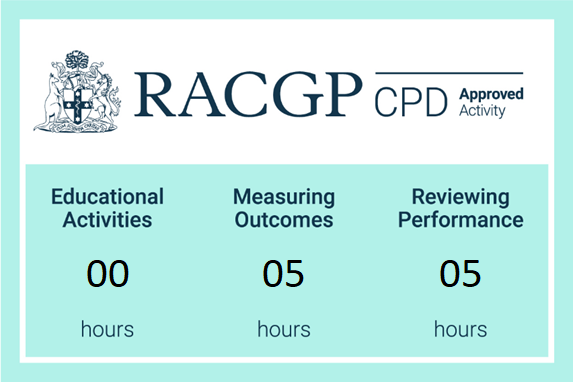Diabetes Clinical Audit
2023-2025 Triennium

The 4Cyte Pathology Diabetes Clinical Audit has been designed by doctors for doctors with a special interest in diabetes management. Our audit assists participants in identifying patients with impaired glucose levels who have not undergone follow-up testing. It also involves monitoring HbA1c levels in patients diagnosed with type 1 or type 2 diabetes and assessing whether diabetic patients fulfill the annual cycle of care for pathology testing recommendations, including urine microalbumin, eGFR and blood fats-lipids. At 4Cyte Pathology, we offer a comparative review of your personal practice against the total laboratory data.
Why 4Cyte Diabetes Clinical Audit?
- Our Diabetes Clinical Audit was developed after conducting a needs assessment with GPs. Learning objectives are measurable and relevant to general practice.
- Your Diabetes Clinical Audit reports will be delivered online and will be accessible at any time.
- You will be able to systematically assess and improve the management of diabetic patients, ensuring timely monitoring, adherence to recommended testing guidelines and identifying areas for enhancement in diabetes care within your practice.
- We provide spread of HbA1c data calculations which will help you to understand the variability of HbA1c levels within your patient group.
- All your patients’ details will be de-identified for the purpose of statistical analysis and peer group comparison to ensure the privacy of patients is protected.
How to Participate
Registration
Complete our registration form found on our website and return your completed form to education@4Cyte.com.au or fax to +61 2 8069 0601. Upon acceptance of the application, a username and password will be issued to access the 4Cyte online CPD portal.
Data Collection
A minimum of 10 diabetic patients are required to be part of this audit. If you are already sending your diabetic patients’ specimens to 4Cyte Pathology, we will access patient data from our system.
Receive your Audit Reports
For this audit, two statistical reports will be made available in your 4Cyte CPD account:
- The first statistical report at the commencement of the audit.
- A follow-up statistical report 6 weeks after receiving the first report.
In this report all your data will be presented in graphs and tables for easy interpretation.
At the beginning and the end of the Audit, you will also receive a list of your patients’ recall dates and recommendations for the Audit period and the previous 6 months. This will allow you to review your patient management and assist with patient follow up. The list of your patients will be sent you in a password protected email for patient privacy.
Submit your evaluation questionnaire
To obtain your CPD points you will have to review both reports and complete all evaluation questionnaires.
Your CPD Points
CPD hours will be uploaded by 4Cyte to the RACGP within 4 weeks upon completion of the audit.
Audit Outcomes & Reporting
Statistical Interval report includes:
- Overview of results for your patients presenting for HbA1c
- The proportion of diabetic patients’ who have undergone at least one of the following tests (urine microalbumin, eGFR, blood lipids) during the past year of the audit reporting period.
- The proportion of diabetic patients who have undergone at least one of the following tests: urine microalbumin, eGFR or/and blood fats-lipids.
- The frequency of HbA1c testing within your patient group. This involves counting the number of times each patient has undergone HbA1c testing during the audit reporting period.
- Mean, median and range calculation (Spread of data) of HbA1c.

Learning Objectives
By the end of this activity, you will be able to:
- Identify your patients with diabetes that are overdue for monitoring.
- Evaluate whether your diabetic patients are fulfilling the recommended laboratory testing as per the diabetes annual cycle of care.
- Evaluate your practice adherence to patient management recommendations against the total laboratory data.
- Identify areas of improvement in diabetes care within the practice.